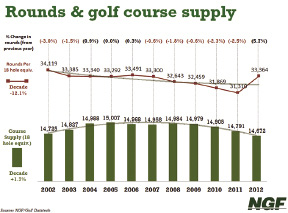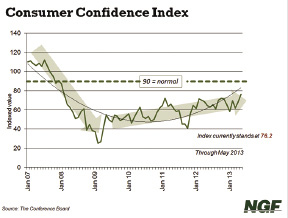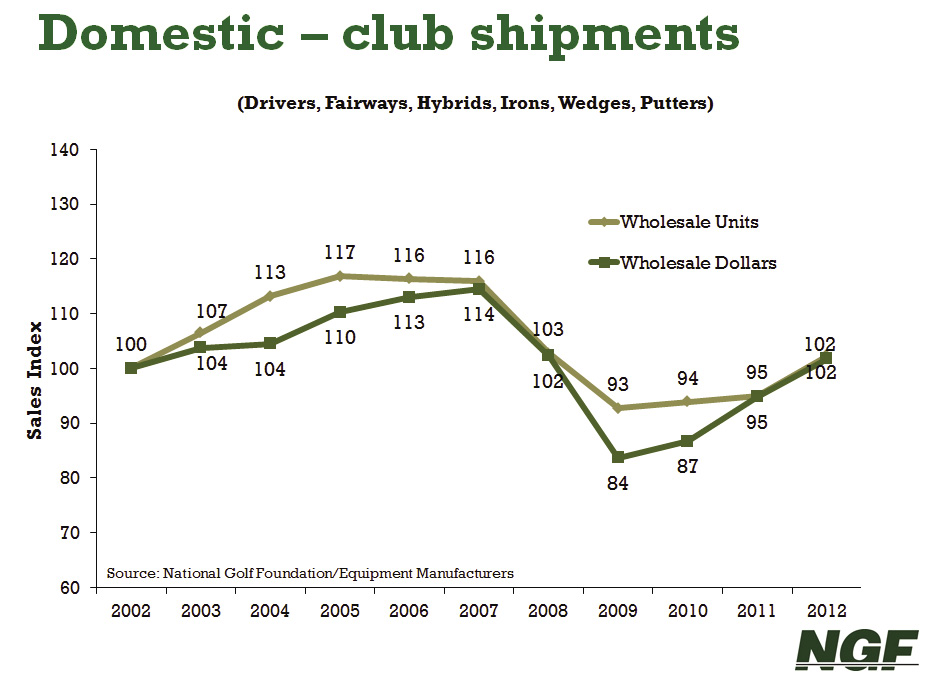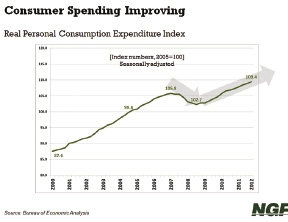For the first time in years we can stay that things are looking up in the golf industry, we are cautious however as improvement will likely be modest. In developing a golf appraisal we typically look at certain economic indicators like income, population, unemployment and housing trends. We find these barometers are closely tied to consumer spending and consumer confidence. Unemployment for instance continues to decline, nationally the rate was 6.7% in December 2013, down from 7.0% in November. Over the year (2013) the number of unemployed persons and the unemployment rate were down by 1.9 million and 1.2 percentage points, respectively. For comparison purposes, unemployment was 7.9% in December of 2012, 8.5% in Dec 2011, 9.4% in Dec of 2010 and 9.9% in December of 2009.
The number of new home permits are up in most New England states, in Connecticut for instance a total of 4,669 permits were issued in 2012. This figure is up over 2009, 2010 and 2011, as 3,786, 3,932 and 3,173 permits were issued, respectively in those years. While permits are still well below the peak 11,837 reached in 2004, the recent trend is upward, indicating a percentage change 47% over the prior year.
And according to the Warren Group, the median single family home price in Connecticut increased from $240,000 in 2012 to $260,000 for 11 months of 2013. In Rhode Island, home prices rose from $195,000 in 2012 to $215.500 in 2013 while in Massachusetts home prices went from $285,000 in 2011 to $290,000 in 2012 to $322,000 through November of 2013.
While nationally the National Golf Foundation reports that the number of courses going away is outpacing the number of courses being added, we have seen little change in product throughout New England. Therefore, with slightly better economic conditions, it is reasonable that we could continue to see some improvement in the golf business. In fact, 2012 saw the largest increase in rounds played since the turn of the century (5.7% nationally). Playable days were up 6.5% according to the PGA of America (data from PGA Performance Trak), therefore weather certainly played a part. An improving national economy also contributed to the increase in play. Only Louisiana and Mississippi saw rounds drop by more than 2% (-2.1% and -2.8%, respectively). There were particularly impressive gains (on average around 8% to 10%) in the north, central and mid-Atlantic regions which helped lift the national numbers.
To put this increase in perspective, the rise represents about 27 million rounds and more than one half billion in additional revenue for the nation's golf course operators. However, keep in mind that rounds played fell 11%, or about 55 million rounds over the last ten years, so the industry recovered about half of its total losses. Rounds played for the first two months of 2013 are off only about 6% compared to 2012. However, if we compare the first two months of 2013 to 2011, it shows we are up by almost 7%.
Prior to 2012, there was a steady dilution of demand at the facility level. For perspective, in 1988 there were 40,000 rounds per 18-hole equivalent That number declined from 34,119 in 2002 to 31,310 in 2011, before jumping up to 33,364 in 2012, as shown by the graph below.
Golf equipment sales continued to recover in 2012 from a recent 2009 low point. Wholesale shipments - in both units and dollars - were up. NGF Indices rose from 95 to 102, returning sales back to 2002 levels when the index was started, but still below the peaks of 2007. Year-to-date (thru March 2013) club units are up 1% and dollars are up 9%.
Despite the aura of uncertainty, consumer confidence is very slowly coming back. The Consumer Confidence Index (Conference Board) currently stands at 78.1 (December 2013), it was 76.2 in May. The index bottomed out in early 2009 at 25 and has since increased; however, an index value of 90 is considered normal for non-recessionary periods. And the Bureau of Economic Analysis estimates the consumer spending index has risen in recent years as well, from 102.2 in 2009 to 109.4 in 2012.
Golf is heavily dependent on consumer confidence and disposable income, so as economic conditions continue to improve, so should the golf industry. We are starting to see some increases in earnings. In the short term, we expect that much will likely go towards capital instead of flowing to the bottom line (net profits). It's been a number of years with no raises or sufficient cap x spending, so don't expect profit margins to go up as a result, not just yet.
Jeffrey Dugas, MAI, SGA, is a partner in the firm of Wellspeak Dugas & Kane, LLC, and heads the Golf Advisory Group, Cheshire, Conn.













